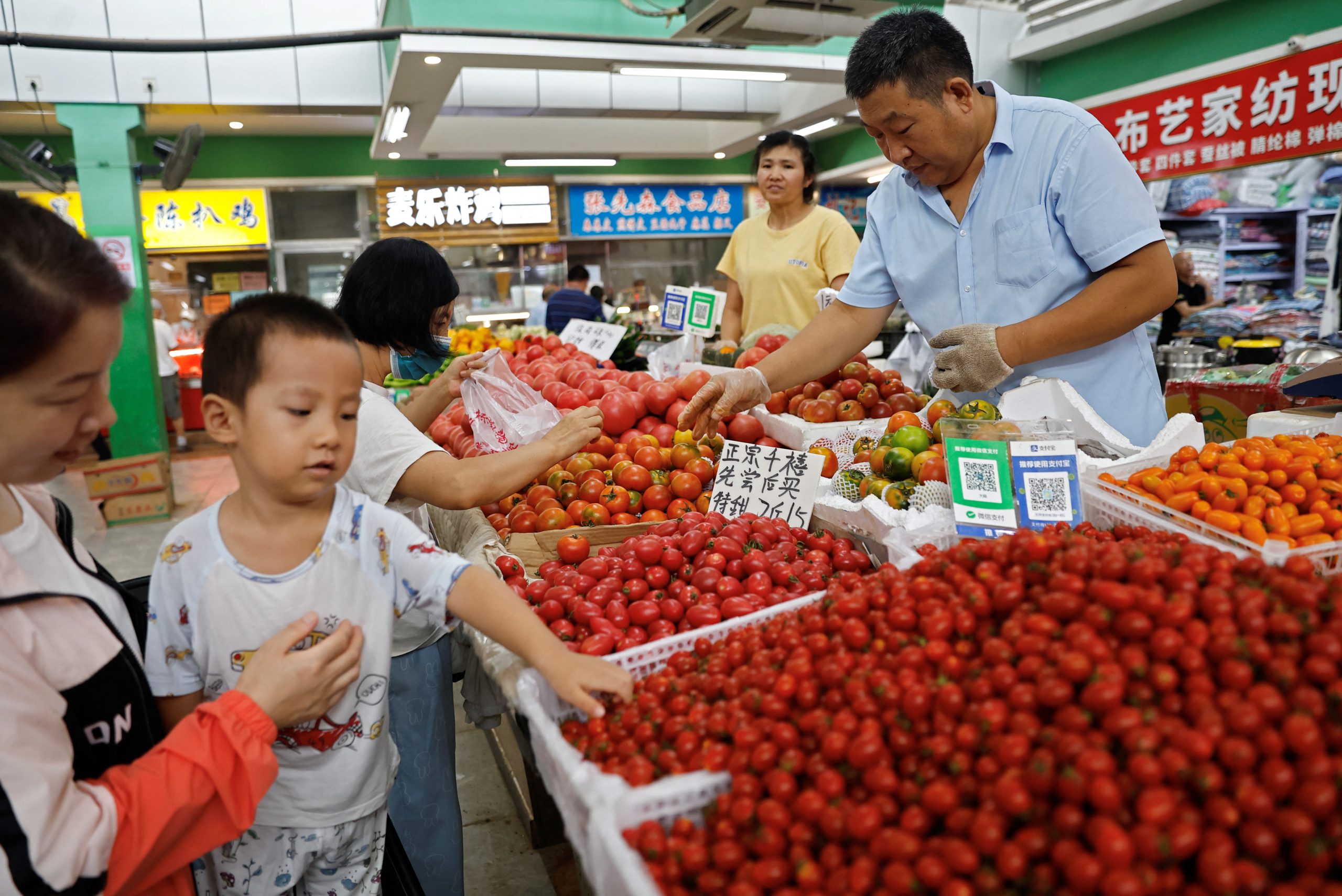China entered a period of deflation in July, intensifying the pressure on policymakers to enhance both monetary and fiscal support. This imperative arises despite indications that the decline in prices may be transitory, potentially limiting the effectiveness of any stimulus measures.
According to the National Bureau of Statistics, the consumer price index experienced a 0.3% decrease last month compared to the previous year, marking its first descent since February 2021. The forecast by economists surveyed by Bloomberg had anticipated a 0.4% drop in prices. In parallel, producer prices continued to decline for the tenth consecutive month, contracting by 4.4% in July year-on-year, slightly worse than anticipated. This is the initial occurrence since November 2020 in which both consumer and producer prices have experienced contractions.
The National Bureau of Statistics attributed the decrease in consumer prices to a high base of comparison with the previous year, emphasizing that this contraction is expected to be temporary, and consumer demand improved during July. Dong Lijuan, the chief statistician at the NBS, stated, “With the impact of a high base from last year gradually fading, the CPI is likely to rebound gradually.” However, these comments are noteworthy as Chinese authorities have recently discouraged economists from discussing deflation to bolster positive narratives about the economy.
China, which initially experienced an upsurge in consumer and business demand following the lifting of pandemic restrictions, is now grappling with an unusual period of declining prices. Factors such as a prolonged downturn in the property market, diminished export demand, and subdued consumer spending are impeding the nation’s economic recovery. Robin Xing, the chief China economist at Morgan Stanley, commented, “China is in deflation for sure… The question is how long. It’s up to the policymakers — will they react with coordinated fiscal and monetary easing.”

In response to the weak inflation data, the Hang Seng China Enterprises Index and the onshore benchmark CSI 300 Index experienced slight declines. Investors are anticipating that the People’s Bank of China may increase monetary stimulus, including interest rate cuts. However, the central bank faces several constraints, including a weaker yuan and elevated levels of debt in the economy. Fiscal support has been relatively restrained due to financial pressures confronting local governments.
To overcome these challenges, Xing emphasized the necessity of accelerating government spending, increasing government debt, and implementing coordinated monetary and fiscal easing measures. However, concerns persist about the effectiveness of releasing money into the banking system, as some companies appear hesitant to expand production amid softening profit expectations.
Chinese regulators have attempted to downplay deflation risks, instructing analysts and companies not to publicly discuss the matter. PBOC officials have asserted that China will steer clear of deflation in the second half of the year, with consumer price growth anticipated to approach 1% by year-end.
The decline in prices also implies a rise in real financing costs within the economy, a factor that some economists argue should intensify the urgency for the PBOC to take action to prevent further weakening of growth momentum. Bruce Pang, head of research and chief economist for greater China at Jones Lang LaSalle Inc., indicated that addressing reserve requirements (RRR) might be more necessary than reducing interest rates in the short term, as various structural monetary policy tools and policy bank financing tools remain available.
The core inflation measure, which excludes volatile food and energy costs, saw an increase to 0.8% from 0.4%, indicating underlying albeit subdued demand in the economy. Within the consumer inflation data, prices for household goods, food, and transportation experienced contractions, while prices for service spending, such as recreation and education, climbed.
“We expect CPI will be negative only for the short term, like for one to two months,” said Ding Shuang, chief economist for Greater China and North Asia at Standard Chartered Plc. “Food and energy prices are more likely to go up instead of going down in the second half of the year. That means the drag on CPI seen in the first half from food and fuel will like ease.”
While PPI has likely bottomed out, “it will be rather hard to emerge from deflation in the rest of the year,” he said.
